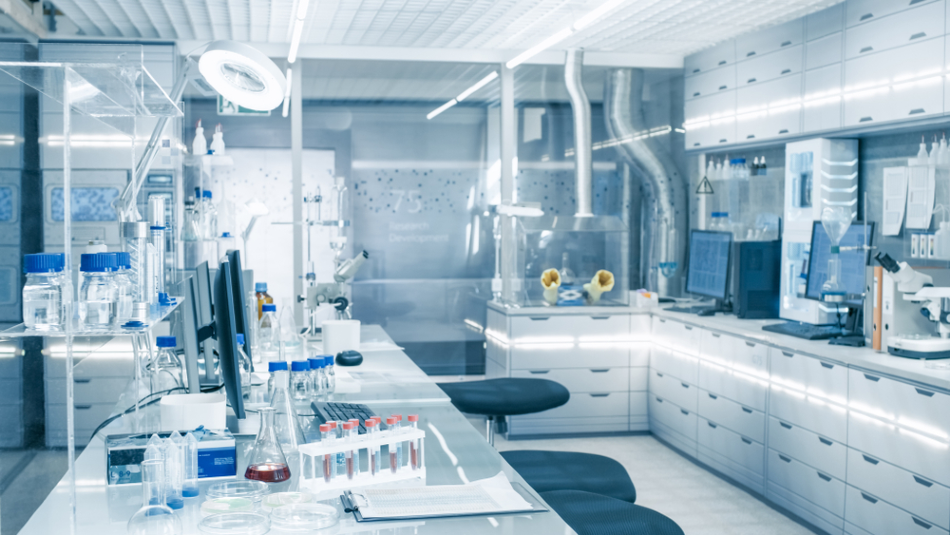
Image Credit: Gorodenkoff/Shutterstock.com
Liquid chromatography is an analytical technique used to separate components in a mixture using a liquid mobile phase and solid stationary phase. The mode of chromatography used depends on the polarity of the analyte of interest.
Two of the most common types of liquid chromatography include normal phase and reversed-phase chromatography, but now hydrophilic interaction chromatography (HILIC), which is a mixed-mode of chromatography, has gained popularity, showing many advantages over the more traditionally used liquid chromatography techniques.
How Hydrophilic Interaction Chromatography Works
Hydrophilic interaction chromatography is a type of mixed-mode liquid chromatography, mainly used for the separation of polar compounds.
When HILIC first appeared, it was considered a new type of normal phase chromatography, however, now it is thought to be much more complex than being just another type of normal phase chromatography. HILIC does use polar stationary phases that are used in normal phase chromatography, but the mobile phase used is like that in reversed-phase chromatography.
Like other modes of chromatography, HILIC has a range of different stationary phases available, including silica-based, pentafluorophenyl and pentahydroxy phase columns. The mobile phase for HILIC is generally acetonitrile with a small percentage of water, although other solvents that are miscible with water, such as THF, can also be used. Using acetonitrile as a solvent means that the lipid bilayer inside the column does not get disrupted as it would potentially be if an alcohol mobile phase was used. Additives in the mobile phase such as ammonium acetate and ammonium formate can be added to control the pH and ionic strength.
The mode to which HILIC works is not fully understood, but it is thought to work by the polar analytes partitioning in and out of the water layer that is adsorbed onto the stationary phase surface. Dipole electrostatic interactions are also thought to play a part in how HILIC works.
Advantages and Disadvantages of HILIC
There are many advantages of HILIC over other kinds of chromatography. These include:
- Using it instead of reversed-phase chromatography when analytes are not being retained on a column.
- Overcoming solubility issues that happen with normal chromatography due to the polar nature of the technique.
- High sensitivity when paired with mass spectrometry due to the solvation of the mobile phase ions.
- Highly compatible with solid-phase extraction methods due to organic solvent composition.
- Low back pressures due to the low viscosity of the solvents used.
- High flow rates can be used due to the low viscosity of the mobile phase.
- Several types of stationary phases available.
Disadvantages of HILIC
There are not many disadvantages to using HILIC over other types of chromatography if HILIC suits the compound of interest, but there are some disadvantages to consider. These include:
- Very reliant on acetonitrile as a mobile phase.
- Alternative mobile phases to acetonitrile were shown to be problematic when using electrospray positive ionization and were incompatible with UV detection systems.
- Peak shape can be affected by the high amount of acetonitrile in the injection solvent.
- More complex to use than other liquid chromatography techniques.
Applications of HILIC in Several Industries
HILIC can be used across a wide range of fields to analyze polar chemical and biochemical molecules. Fields that HILIC is used include pharmacology, biochemistry, the food industry and in agriculture.
The most common area of analysis is for drugs and their metabolites, but HILIC is also being used to analyze carbohydrates, peptides, antibiotics and pesticides. The use of HILIC to analyze biological samples has increased because sample preparation when looking for metabolites is very simple, as metabolic processes uses the addition of polar groups.
The applications of HILIC across each field include:
- Pharmacology: To analyze drugs and their metabolites.
- Biochemistry: Metabolic pathways and biomarkers for disease.
- Food industry: Peptide mapping, vitamins, contaminants and toxins.
- Agriculture: Environmental toxins and polar analytes found in plant extracts.
References and Further Reading
Buszewski, B. and Noga, S. (2011). Hydrophilic interaction liquid chromatography (HILIC)—a powerful separation technique. Analytical and Bioanalytical Chemistry, 402(1), pp.231-247.
Heaton, James & Smith, Norman. (2012). Advantages and Disadvantages of HILIC; a Brief Overview. Chromatography Today. 5. 44-47.
Rodríguez-Gonzalo, E. and García-Gómez, D. (2018). Hydrophilic Interaction Chromatography: Current Trends and Applications. Reference Module in Chemistry, Molecular Sciences and Chemical Engineering.
https://www.news-medical.net/life-sciences/Hydrophilic-Interaction-Chromatography-Applications.aspx
https://www.chromacademy.com/
Disclaimer: The views expressed here are those of the author expressed in their private capacity and do not necessarily represent the views of AZoM.com Limited T/A AZoNetwork the owner and operator of this website. This disclaimer forms part of the Terms and conditions of use of this website.